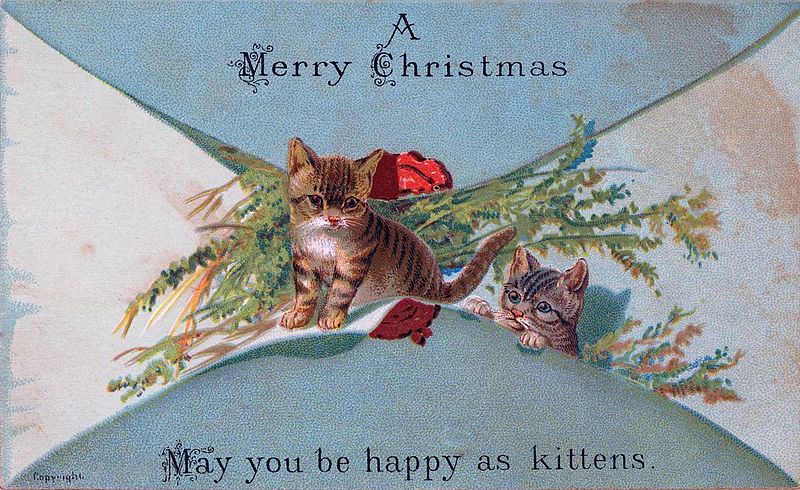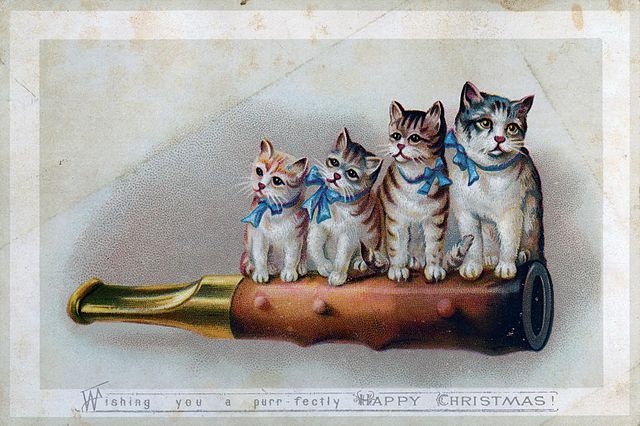
As all Thammasat University students know, Christmas is an annual festival commemorating the birth of Jesus, observed on December 25.
Even if we do not celebrate Christmas, we may wish to learn more about the holiday to understand its impact on billions of people around the world in a sociological, historical, and cultural way.
The TU Library owns a number of books and recordings about Christmas. The recordings may be heard at the Rewat Buddhinan Media Center, Underground 2 level, Pridi Banomyong Library, Tha Prachan campus and the Audio-Visual Materials collection of the Puey Ungphakorn Library, Rangsit campus.
The noun Christmas derives from Old English words meaning Christ’s mass or the mass of Christ. Christmas is a church festival observed in memory of the birth of Christ, and the word mass refers to an important ceremony in the Roman Catholic Church. Christmas was written as one word starting in the 1300s.
Some of the Christmas-time customs that we are familiar with are relatively recent. For example, Christmas cards were first exchanged in the 1840s and only became widespread in the 1860s.
In the Kingdom, we may hear Christmas songs played on recordings at shopping malls, where Christmas decorations are also present in a festive, party-going spirit. Christmas trees, Christmas lights, garlands, wreaths, mistletoe, and holly are also sometimes seen, as well as images of Santa Claus.
Retail sales all over the world and the health of economies have become dependent on Christmas shopping. For many years, some observers have noted the increasing commercialization of Christmas. Decades ago, the essayist E. B. White wrote in his book The Second Tree from the Corner (1954) that to perceive Christmas through its wrapping becomes more difficult with every year.
The TU Library collection includes several books by E.B. White, among which the most famous is probably the children’s story Charlotte’s Web.

Celebrating Santa Claus
Some literary historians have stated that the reason that Santa Claus is so famous today is in part due to the popularity of a single poem. A Visit from St. Nicholas, also referred to as The Night Before Christmas is a poem first published in the 1820s. It was written by Clement Clarke Moore, an American who was professor of Oriental and Greek Literature, as well as Divinity and Biblical Learning, at the General Theological Seminary of the Protestant Episcopal Church, in New York City, the United States of America.
In recent years, there has been some debate over whether Professor Moore really wrote the poem, which was first published anonymously. Professor MacDonald P. Jackson, an emeritus professor of English at the University of Auckland, has argued that A Visit from St. Nicholas was really written by an American farmer and army officer, Henry Beekman Livingston Jr.
Whoever wrote it, the poem has inspired many film versions, including The Nightmare Before Christmas (1993), an American stop-motion animated musical fantasy film produced and created by Tim Burton. The TU Library owns a DVD of The Nightmare before Christmas which may be seen in the Rewat Buddhinan Music Room, U2 level, Pridi Banomyong Library.
To give an example of what made A Visit from St. Nicholas so lastingly popular, here is the poem:
*********
‘Twas the night before Christmas, when all through the house
Not a creature was stirring, not even a mouse;
The stockings were hung by the chimney with care,
In hopes that St. Nicholas soon would be there;
The children were nestled all snug in their beds,
While visions of sugar-plums danced in their heads;
And mamma in her ’kerchief, and I in my cap,
Had just settled our brains for a long winter’s nap,
When out on the lawn there arose such a clatter,
I sprang from the bed to see what was the matter.
Away to the window I flew like a flash,
Tore open the shutters and threw up the sash.
The moon on the breast of the new-fallen snow
Gave the lustre of mid-day to objects below,
When, what to my wondering eyes should appear,
But a miniature sleigh, and eight tiny reindeer,
With a little old driver, so lively and quick,
I knew in a moment it must be St. Nick.
More rapid than eagles his coursers they came,
And he whistled, and shouted, and called them by name;
“Now, Dasher! now, Dancer! now, Prancer and Vixen!
On, Comet! on, Cupid! on, Donder and Blitzen!
To the top of the porch! to the top of the wall!
Now dash away! dash away! dash away all!”
As dry leaves that before the wild hurricane fly,
When they meet with an obstacle, mount to the sky;
So up to the house-top the coursers they flew,
With the sleigh full of Toys, and St. Nicholas too.
And then, in a twinkling, I heard on the roof
The prancing and pawing of each little hoof.
As I drew in my head, and was turning around,
Down the chimney St. Nicholas came with a bound.
He was dressed all in fur, from his head to his foot,
And his clothes were all tarnished with ashes and soot;
A bundle of Toys he had flung on his back,
And he looked like a pedler just opening his pack.
His eyes—how they twinkled! his dimples how merry!
His cheeks were like roses, his nose like a cherry!
His droll little mouth was drawn up like a bow
And the beard of his chin was as white as the snow;
The stump of a pipe he held tight in his teeth,
And the smoke it encircled his head like a wreath;
He had a broad face and a little round belly,
That shook when he laughed, like a bowlful of jelly.
He was chubby and plump, a right jolly old elf,
And I laughed when I saw him, in spite of myself;
A wink of his eye and a twist of his head,
Soon gave me to know I had nothing to dread;
He spoke not a word, but went straight to his work,
And filled all the stockings; then turned with a jerk,
And laying his finger aside of his nose,
And giving a nod, up the chimney he rose;
He sprang to his sleigh, to his team gave a whistle,
And away they all flew like the down of a thistle,
But I heard him exclaim, ere he drove out of sight,
“Happy Christmas to all, and to all a good-night.”
********
There are many other fine literary works written about Christmas in the collection of the TU Library, by authors ranging from Alfred Tennyson to Henry Wadsworth Longfellow.

(All Images courtesy of Wikimedia Commons)
